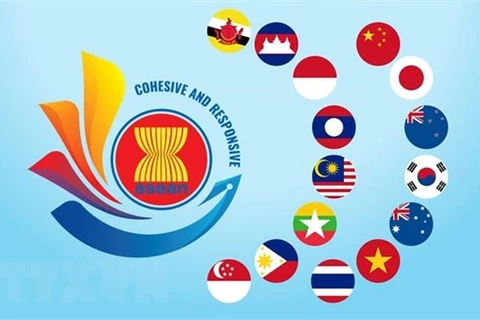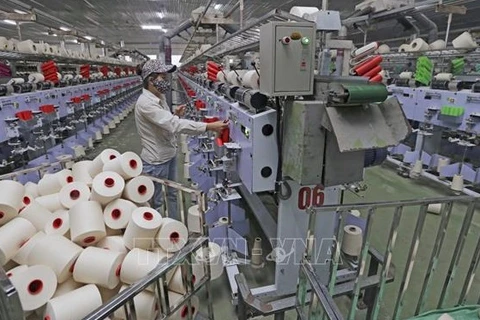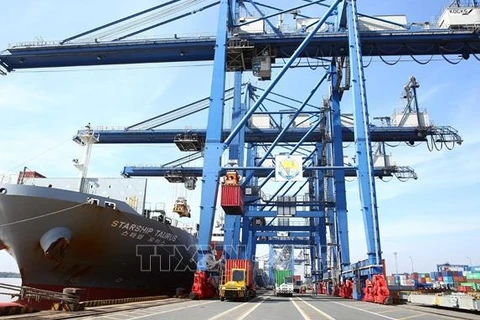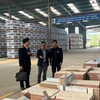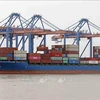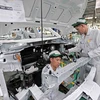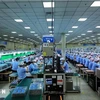Hanoi (VNA) – The Regional Comprehensive Economic Partnership (RCEP), which came into effect a year ago, has brought about great business chances for enterprises in the region, according to experts.
Right after the deal took effect, trade among regional countries has been increasing. Data from China’s General Administration of Customs showed that in the first 11 months of 2022, import-export revenue between the country and RCEP members rose 7.9% year on year to 11.8 trillion CNY (1.74 trillion USD), accounting for 30% of the country’s total.
Of the total, trade between China and ASEAN countries reached nearly 5.9 trillion CNY (872.65 billion USD), up 15.5% year on year.
According to experts, the greatest benefit from the deal is preferential tax rates, with zero tariff being applied on more than 90% of goods traded by its members.
A recent survey from HSBC showed that more than 93% of surveyed companies from RCEP members said that they plan to increase transactions with China, and more than 30% said they expects at least 30% growth in business in China this year.
In 2023, RCEP member countries are predicted to recover faster, especially in tourism and real estate. Thanks to the RCEP, member will have more chances to boost tourism cooperation, thus promoting the growth of other sectors.
At the same time, the deal is expected to create development opportunities for emerging economies in the region, including those in the ASEAN.
Members' cooperation with the thirds has also contributed to the growth of multilateralism, globalisation and regional collaboration, and creating a firm foundation for the speeding up of negotiations of a free trade agreement between China, Japan and the Republic of Korea.
RCEP has helped switch the economic and trade cooperation focus from China to the ASEAN, and move China’s economic-trade partnership concentration to the ASEAN, according to experts.
The RCEP was signed in 2020 between the Association of Southeast Asian Nations (ASEAN) and five partners, namely Australia, New Zealand, China, Japan, and the Republic of Korea. Taking effect on January 1, 2022, it is the largest FTA at present, covering 30% of the global GDP.
Under this agreement, about 90% of the tariff lines will be eliminated within 20 years since it came into force./.
Right after the deal took effect, trade among regional countries has been increasing. Data from China’s General Administration of Customs showed that in the first 11 months of 2022, import-export revenue between the country and RCEP members rose 7.9% year on year to 11.8 trillion CNY (1.74 trillion USD), accounting for 30% of the country’s total.
Of the total, trade between China and ASEAN countries reached nearly 5.9 trillion CNY (872.65 billion USD), up 15.5% year on year.
According to experts, the greatest benefit from the deal is preferential tax rates, with zero tariff being applied on more than 90% of goods traded by its members.
A recent survey from HSBC showed that more than 93% of surveyed companies from RCEP members said that they plan to increase transactions with China, and more than 30% said they expects at least 30% growth in business in China this year.
In 2023, RCEP member countries are predicted to recover faster, especially in tourism and real estate. Thanks to the RCEP, member will have more chances to boost tourism cooperation, thus promoting the growth of other sectors.
At the same time, the deal is expected to create development opportunities for emerging economies in the region, including those in the ASEAN.
Members' cooperation with the thirds has also contributed to the growth of multilateralism, globalisation and regional collaboration, and creating a firm foundation for the speeding up of negotiations of a free trade agreement between China, Japan and the Republic of Korea.
RCEP has helped switch the economic and trade cooperation focus from China to the ASEAN, and move China’s economic-trade partnership concentration to the ASEAN, according to experts.
The RCEP was signed in 2020 between the Association of Southeast Asian Nations (ASEAN) and five partners, namely Australia, New Zealand, China, Japan, and the Republic of Korea. Taking effect on January 1, 2022, it is the largest FTA at present, covering 30% of the global GDP.
Under this agreement, about 90% of the tariff lines will be eliminated within 20 years since it came into force./.
VNA

